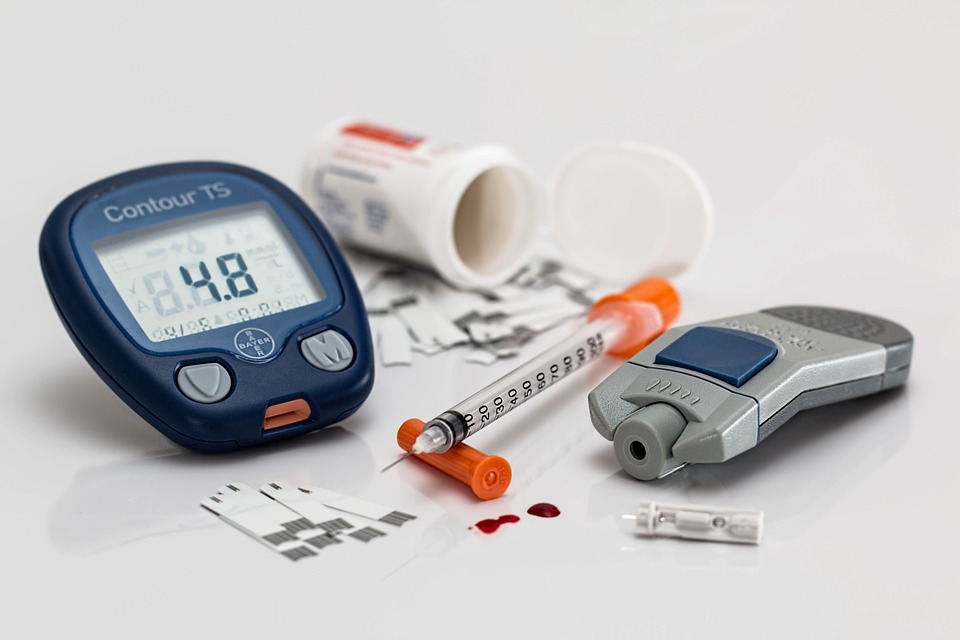Diabetes Mellitus: causes, Prevention and Management
What is diabetes?

Diabetes mellitus is a disease condition due to the inability of the body to make use of carbohydrates or sugar because of a deficiency of insulin. Insulin is a hormone produced by the pancreas that is essential for the metabolism or use of carbohydrates. Insulin is responsible for facilitating the uptake or entry of sugar into the cells for energy production.
The lack of deficiency of insulin leads to diabetes mellitus in which the blood sugar level is too high. The excess glucose is eliminated by the kidney and excreted in the urine. This is why the presence of too much sugar in the blood or urine are signs of diabetes mellitus.
Diabetes is a common disease but unfortunately many of the victims may not be aware of the condition. Diabetes can lead to serious complications but the good news is that diabetes mellitus can be modified or controlled accordingly.
What Causes Diabetes Mellitus?
The exact cause of diabetes is unknown but heredity may play an important role in the development of diabetes. Individual whose parents have diabetes are more likely to be diabetes. This fact does not necessary mean that children or diabetic parent/parents will have the disease.
Some other factors are known to prediscope a person to developing the disease and they include excessive weight gain (obesity), lack of regular physical activity or exercise and side effects of certain drugs used for other health condition as well as stress.
The two main types of diabetes are insulin-dependent diabetes also referred to as juvenile-onset diabetes and the non-insulin dependent diabetes also known as adult-onset diabetes it is when a person develops diabetes below the age of 35. This is mainly because the insulin. But occasionally this type of diabetes may develop after the age of 35.
What are the Signs and Symptoms of Diabetes?
The common symptoms include abnormal or excessive thirst, drinking large quality of water, frequent urination, frequent occurrence of boils, pains, numbness, burning or tingling sensation in the limbs, foot ulcers that fail to heal, sexual weakness, history of delivery of large babies, still-births or recurrent abortion in women, and pressure of blurred vision.
Diagnosis of Diabetes
Clinical diagnosis usually involves the testing of early morning urine to determine the amount od sugar in the urine. This can be done or measured with clinical. However, the most reliable diagnostic method is to estimate the quantity of blood sugar using a device called glucometer. It is beat to measure the fasting blood sugar when the person has not eaten. Diabetes can also be diagnosed simply from the clinical symptoms above. Passing urine on the spot and watchine for invasion of ants to the spot.
Dangers and complication of Diabetes
Diabetes is a serious disorder or disease that can affect practically all cells and organs of the body Diabetes can affect;
1 the heart, causing heart attack. The kidney, causing hypertension and kidney failure.
1 The blood vessels causing blockage with reduced supply blood to body organs especially the feet.
- The eyes causing vision problems including cataracts.
- The feet, causing gangrene or black coloration around the feet or toes.
- The nervous system, causing pains, loss of feeling in the leg.
- Sexual performance, causing impotence.
- Predisposes the body to infections especially the skin and foot.
The lack of care or treatment or failure to follow medical advice can result in these conditions.
Handling the Complications of Diabetes
Although there are many complications of diabetes but the most common ones are giddiness or drowsiness and weakness that lead to fainting. The falling down may be related to low blood sugar. Patients are therefore advised to always carry some cube of sugar or powdered glucose or other substances containing sugar and take them immediately when they feel weak or fainting.
On the other hand the patient can become unconscious due to high level of sugar in the blood, resulting in diabetic coma. When this happens the patient should be taken ti the hospital for assessment and care.
Injection of Insulin.
Diabetes can be controlled be giving insulin injection. Patients can be taught to give themselves insulin by injection. This can be once or twice a day as directed by your doctor. The dosage of insulin that the patient takes may cause the blood sugar to drop to a very low level (hypoglycaemia). This can result in feeling of tremors, sweating, dizziness, abrupt weakness and confusion.
Management and Control of Diabetes
There is no cure for diabetes but it can be managed or controlled through changes in lifestyle, maintenance of close to normal blood sugar relief of symptoms, prevention of complications and appropriate treatment.
The Role of Diet in the Management of Diabetes
Proper selection of diet is an importance aspect in the management and control of diabetes. Diabetes patients must eat all three classes of food which include carbohydrates, protein, and fat but in moderate amounts.
Diabetes patient can eat the following foods:
- Carbohydrate foods such as yam, bread, rice, yam flour, maize, millet and garri. Carbohydrate foods should not be omitted from the diabetic diet.
- Fat such as vegetable and fresh palm oil. Diabetic patients can also drink tea, coffee, soda water and grape fruit.
On the other hand, it is recommended that diabetic patients should avoid the following diet as much as possible in order to avoid complications. These include: - Simple sugars (table sugar)
- Sweet soft drinks and malted drinks.
- Chocolate or cocoa-based beverages such as Bournvita, Milo, Vitalo, Ovaltine and so on….
- Fatty meat
- Butter
- Egg yolk
- Sugar fruits such as Pineapple, pawpaw, banana among others should be used in small amounts for tea and coffee.
Foods Recommended for the Management of Diabetes are foods containing large quantities should be avoided. Foods rich in carbohydrates or starch bread, potatoes, rice should be used in limited quantities.